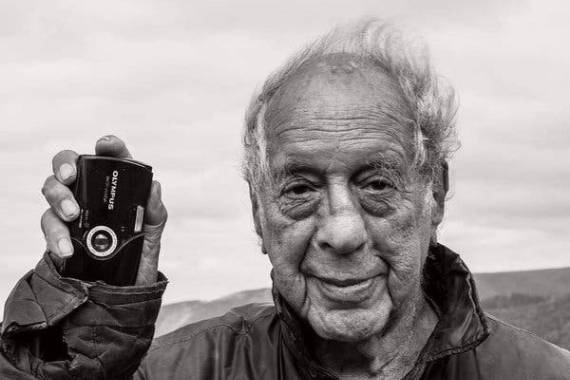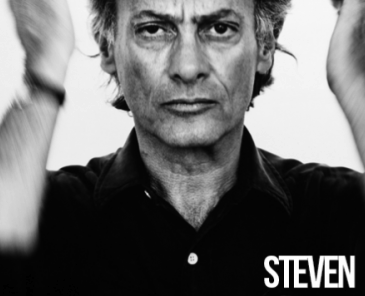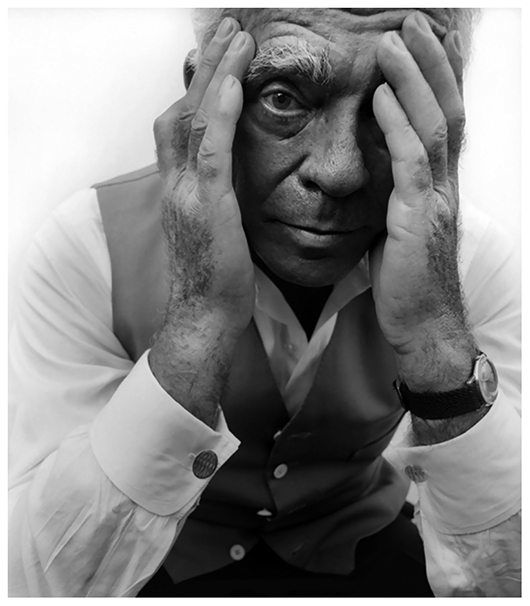Robert Frank (Zurich, Switzerland, November 9, 1924-Inverness, Nova Scotia, September 9, 2019) was a well-known Swiss photographer, an important and original figure within the field of American photography and film. His most notable work is the photography book The Americans, published in 1958, which is heavily influenced by the postwar period. Frank later expanded his interests to film and experimented with composition and manipulation of photographs. In 1996 he received the International Award from the Hasselblad Foundation PHotoEspaña Baume et Mercier Award 2009. </ P>
he was born into a wealthy Jewish family in Switzerland. Rosa, Frank's mother, was of Jewish descent. His father, Hermann, had been stateless after the First World War and had to apply for Swiss citizenship for Frank and his older brother, Manfred. Although Frank and his family remained safe in Switzerland during World War II, the Nazi threat nevertheless affected his understanding of oppression. He turned to photography partly as a way to escape the family business tradition, being trained by a few photographers and graphic designers before creating his first book of photographs in 1946, 40 Photos. Frank immigrated to the United States in 1947, taking a job in New York City as a fashion photographer for Harper's Bazaar. Soon after, he began touring South America and Europe. He published two more books of photographs taken in Peru, and returned to the US in 1950. That year was a momentous one for Frank, who, after meeting Edward Steichen, participated in the 51 American Photographers group show at the Museum of New York Modern Art (MoMA); He also married a fellow artist, painter, Mary Lockspeiser, with whom he had two children, Andrea and Pablo.
Although he was initially optimistic about the United States, his perspective quickly changed as he faced the fast pace of American life and what he saw as an emphasis excessive on money. Since then, he began to view the United States as an often sad and lonely place, a perspective that became evident in his subsequent photographic work. Frank's own dissatisfaction with the excessive control exercised by his publishers over his work was also a determining factor in his experience. He continued to travel, moving his family temporarily to Paris. In 1953 he returned to New York and continued to work as a freelance photojournalist for magazines such as McCall's, Vogue, and Fortune.
With the help of his most influential artist, photographer Walker Evans, Frank received special permission from the John Simon Guggenheim Foundation in 1955 to travel across the United States and photograph society at all levels. He took his family with him on a series of road trips over the next two years, taking some 28,000 photographs. Only 83 of these were selected by him to be published in The Americans. Frank's tour was not without incident. While driving to Arkansas, Frank was arbitrarily thrown into jail after being pulled over by a cop somewhere in the Deep South, told by a sheriff that he had an hour to leave town. The vehicle did not have the proper title and Frank was arrested for a short period of time for possession of a stolen car.
Shortly after returning to New York in 1957, Frank met Beat writer Jack Kerouac at a party, to whom he showed some of the photographs taken at his travels Kerouac immediately told Frank "Surely I can write something about these photos", later contributing to the introduction to the American edition of The Americans. Frank also became friends with Allen Ginsberg, and was one of the leading artists documenting the Beat subculture, which went hand in hand with Frank's interest in documenting the contrast between the prevailing optimism of the 1950s and racial and ethnic differences. classes in American society. The irony that Frank saw in American culture undoubtedly influenced his photographic technique, marking a stark contrast to most contemporary photojournalists, visible in his unusual style of focusing and use of low light, among other characteristics that were deviated from accepted photography techniques.
These differences from contemporary standards of photography made it difficult for Frank to initially get published in the United States. Les Americains was first published in 1958 by Robert Delpire in Paris, and later in 1959 in the United States by Grove Press, where it initially received substantial reviews. Popular Photography, for example, classified images of him as "considerably opaque, porous, cloudy exposures, distorted horizons, and overall sloppy." Although sales were low at first, the introduction of Kerouac helped to raise them in large part because of the popularity of the Beat phenomenon at the time. Over time and by inspiring later artists, The Americans became a landmark work in American photography and art history, and the work with which Frank most identifies. In 1961, Frank presented his first solo exhibition entitled Robert Frank: Photographer, at the Art Institute of Chicago. It was also presented at the MOMA in New York in 1962.
By then, however, Frank had moved on from photography to concentrate on filmmaking. Among these was 1959's Pull My Daisy, which was written and narrated by Kerouac and starred Ginsberg and others within the Beat circle. Pull My Daisy was lauded for years as an improvisational masterpiece, until Frank's co-director, Alfred Leslie, revealed in a November 28, 1968 Village Voice article that the film was in fact carefully planned, rehearsed, and directed. by him and Frank, who shot the movie with a professional lighting set.
In 1960, Frank stayed in the basement of Fluxus artist George Segal while filming Sin of Jesus with a grant from Walter K. Gutman. Isaac Singer's story was transformed to focus on the life of a young woman who worked on a chicken farm in New Jersey. The movie was supposed to be shot in six weeks in and around New Brunswick, but Frank ended up shooting for six months.
His 1972 documentary about the Rolling Stones, Cocksucker Blues, is considered his best known film. The film shows the Stones during their 1972 tour, involved in drug use and group sex. But perhaps what most disturbed the Stones when they saw the final product was the candid way in which Frank faithfully captured the loneliness and despair of life on the streets. Mick Jagger pointed out to Frank: 《It's a fucking good movie, Robert, but if it shows in America they'll never let us into the country again》. The Rolling Stones sued to stop the film from being released, and it was disputed whether Frank or the band owned the copyright on the filmed material. The court settled the dispute by restricting the showing of the film to no more than 5 times a year and only in Frank's presence. Frank's photograph also appeared on the cover of the Rolling Stones' Exile on Main St. album.
other films made by Frank include Keep Busy and Candy Mountain, both co-directed with Rudy Wurlitzer.
Although Frank remained interested in film, he returned to photography in the 1970s with the publication of his second photographic book, Lines of My Hand, in 1972. This work has been described as a "visual autobiography" and consists mostly of personal photographs. None of his subsequent works have had as much notoriety as that achieved with The Americans. Some critics allude to this by his later incorporations of composite images into his work, a decade after Robert Rauschenberg introduced his silkscreen compositions, and in contrast to The Americans, Frank's later images simply did not jibe with established techniques and practices for that time.
Frank and Mary separated in 1969. He remarried in 1971 to sculptress June Leaf, later moving to the community of Mabou on Cape Breton Island, Nova Scotia. In 1974 tragedy struck when his daughter Andrea died in a plane crash in Tikal, Guatemala. A little earlier, his son Pablo was hospitalized and diagnosed with schizophrenia. Much of Frank's subsequent work depicted the impact the loss of his daughter and his son's ongoing battle with his mental illness had had on his life. In 1995 he founded the Andrea Frank Foundation which provided loans to artists.
Since he moved to Nova Scotia, Frank has developed a reputation as a reclusive and reclusive man (particularly after the death of his daughter), turning down most proposals for interviews and public appearances. He continued to take on eclectic assignments as a photographer and music video director for artists like New Order and Patti Smith. Frank continued to make films as well as images, and helped organize several retrospectives of his art. In 1994, the National Gallery of Art in Washington presented the most comprehensive retrospective exhibition of his work to date, Moving Out. He is currently represented by the Pace/MacGill Gallery in New York. In 2007 Robert Frank received the PHotoEspaña Baume et Mercier award from the president of the Festival Alberto Anaut. PHotoEspaña recognized the trajectory of this great photographer.
(Source Wikipedia)
See some photos of Robert Frank</p >
Black and white are the colors of the photograph. To me, they symbolize the alternatives of hope and despair that humanity is forever subject to.








 English (United Kingdom)
English (United Kingdom)